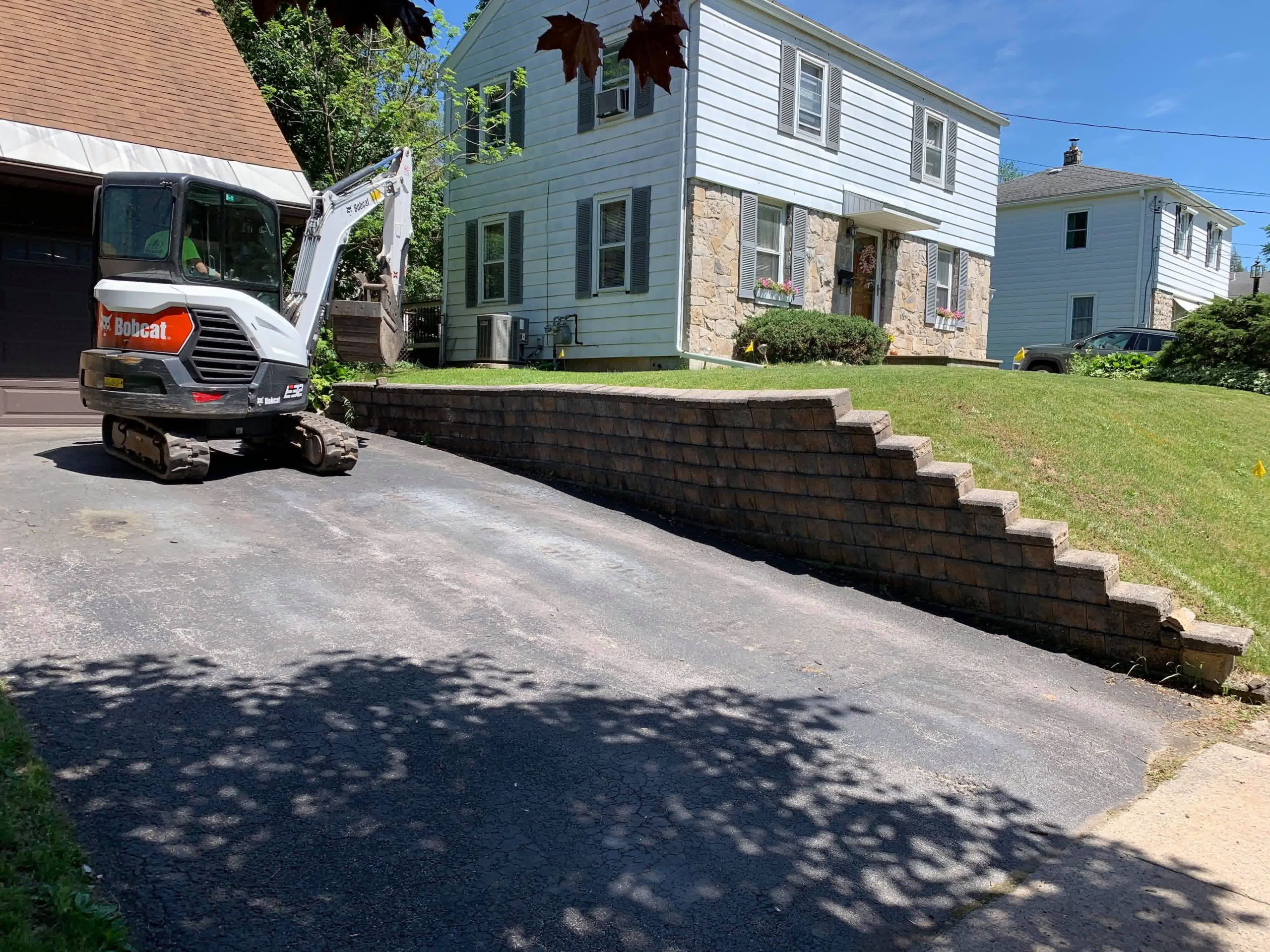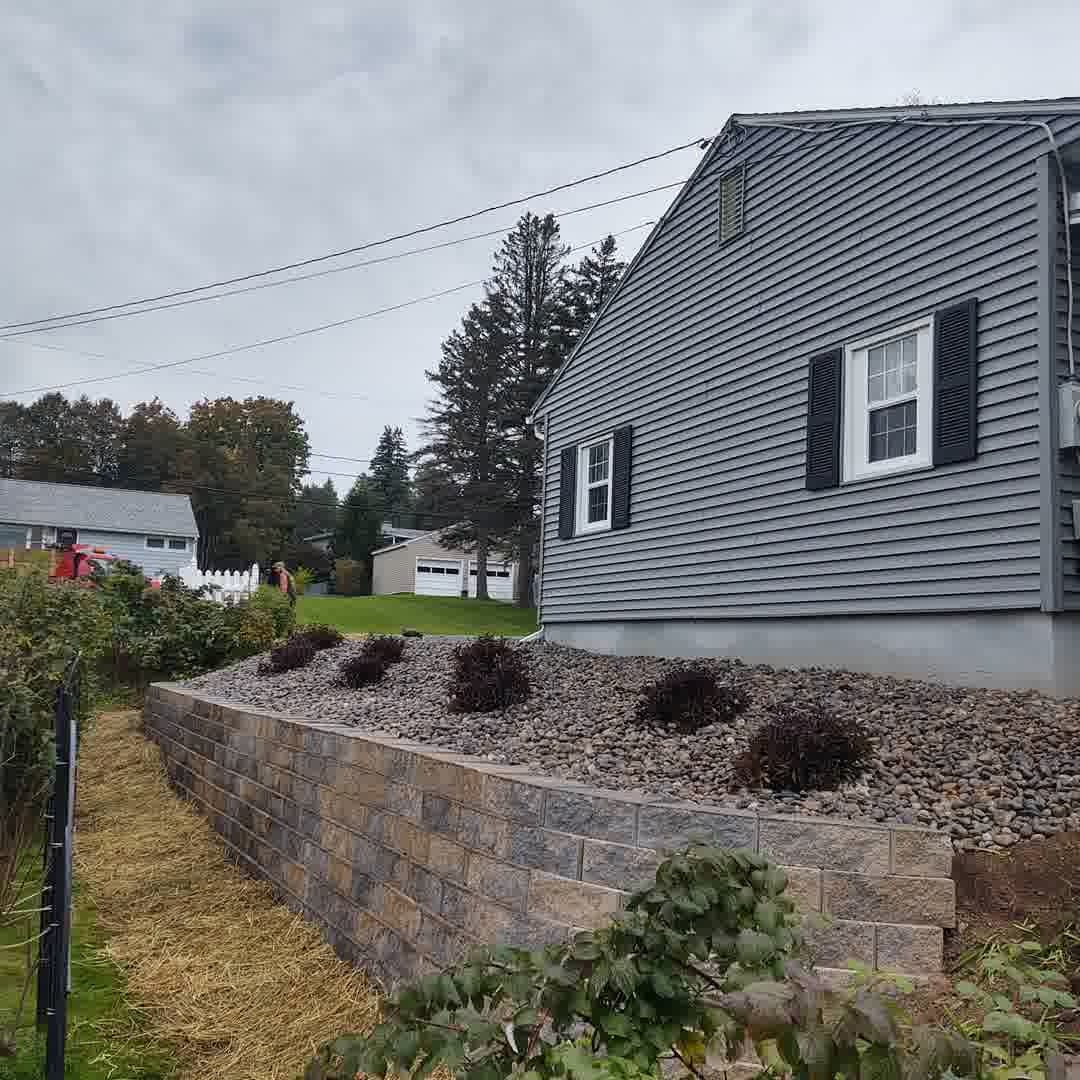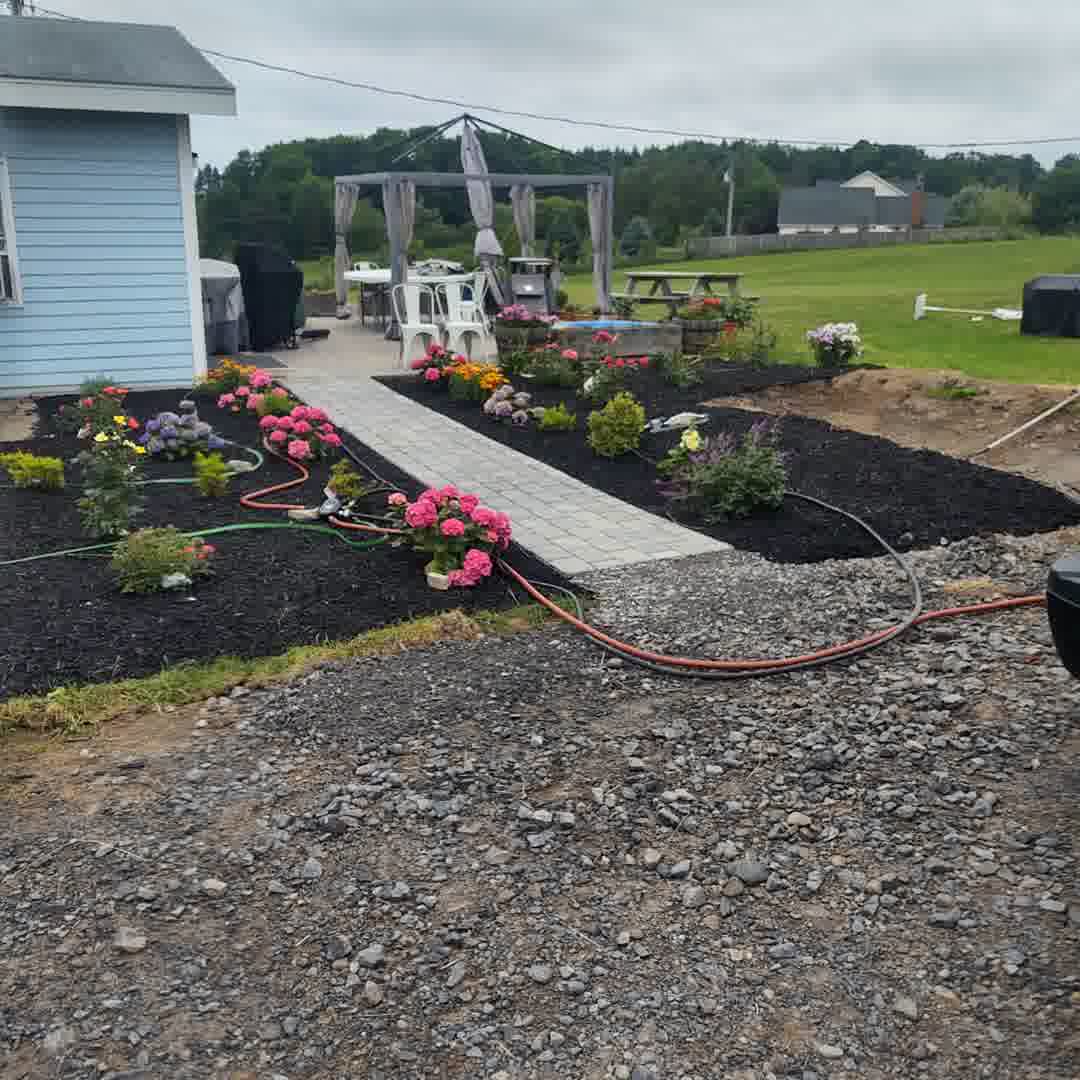Build Smart Outdoors: Retaining Walls, Patio Drainage, and Paver Upkeep
Whether you’re planning a new patio, upgrading your yard with a retaining wall, or simply trying to keep your pavers looking pristine, understanding these key aspects will help you make better decisions and avoid costly mistakes. Let’s explore how to build smart outdoors with long-term results in mind.
Retaining Walls: Strength Meets Style
Purpose and Performance
Retaining walls aren’t just attractive landscape features—they’re functional barriers designed to hold back soil and manage changes in elevation. They’re essential in areas with sloped yards, preventing erosion and helping manage water runoff during heavy rains. By stabilizing the soil, retaining walls reduce the risk of sinkholes and washouts, especially near foundations and walkways.
For a retaining wall to do its job properly, proper planning and engineering are critical. Height, soil type, and drainage considerations all impact how the wall should be constructed. Without the right support structure, even a well-stacked wall can eventually collapse under pressure. Materials like concrete blocks, stone, and segmental wall systems offer durability and strength while still allowing for a wide variety of visual styles.
Drainage Behind the Wall
One of the most overlooked aspects of a retaining wall is what’s behind it—literally. Water pressure is the number one reason retaining walls fail. If water is allowed to collect behind the wall, it can cause the soil to swell and push against the structure until it gives way. That’s why adding gravel backfill, perforated pipe drains, and weep holes is absolutely essential. These features allow water to escape and relieve pressure buildup.

Patio Drainage: Keeping Water Away Where It Counts
Avoiding Water Pooling
A patio should be a place of comfort, not a source of problems. Poor drainage is a common issue with patios that leads to standing water, cracking, shifting pavers, and even damage to nearby home foundations. Water pooling can also create slip hazards and attract unwanted pests like mosquitoes. Addressing drainage early during installation is key to keeping your patio safe, clean, and structurally sound.
The first rule of patio drainage is proper slope. Your patio should be sloped away from the house by at least a quarter-inch per foot to encourage water runoff. In some cases, it may be necessary to include a channel drain, French drain, or pop-up emitter to direct water to a safe discharge point elsewhere on your property.
Drainage Solutions for Existing Patios
If your existing patio holds water, there are several retrofit solutions available. Permeable pavers allow water to seep through into a gravel base below. Installing a surface drain system or regrading the patio surface can also help redirect water. In severe cases, breaking up and re-pouring the concrete or pavers with a new slope may be necessary, but that’s a last resort after easier fixes have been ruled out.

Paver Maintenance: Keep Your Patio Looking New
Cleaning and Sealing Pavers
Over time, pavers can lose their color, become stained, or begin to shift out of place. Regular cleaning and sealing help preserve their appearance and structural integrity. Start by sweeping your patio regularly to keep dirt and organic debris from settling into the joints. A mild pressure wash can remove more stubborn grime, algae, or stains, but it should be done carefully to avoid dislodging sand or damaging the paver surface.
Sealing your pavers not only enhances their color but also protects them from the elements, stains, and weed growth. A good sealant provides a waterproof barrier and helps prevent mold and mildew buildup. It’s typically recommended to reseal every two to three years, depending on exposure to sunlight, rain, and foot traffic.
Re-Leveling and Joint Sand Refill
Over time, pavers may sink, tilt, or move due to settling, erosion, or heavy usage. If you start to notice uneven surfaces, re-leveling may be necessary. This involves lifting the pavers, adjusting the base layer, and resetting them in place. Polymeric sand can be swept into the joints to lock them together and resist weed growth and insect intrusion. Maintaining the joints is just as important as the pavers themselves when it comes to durability and aesthetics.

Conclusion
Smart outdoor construction doesn’t happen by accident—it comes from understanding how each element of your landscape works together. Retaining walls, patio drainage, and paver maintenance may seem like separate pieces, but they are deeply interconnected in supporting a long-lasting and functional outdoor space. Poor drainage can undermine your retaining walls. Neglected pavers can lead to water intrusion. And an improperly built wall can affect everything downhill from it.
By taking the time to plan for proper drainage, choosing quality materials, and sticking to a routine maintenance schedule, homeowners can enjoy their hardscaped spaces for years without costly repairs. With the right foundation—both literally and figuratively—your outdoor living space can stay beautiful, durable, and ready for whatever the seasons bring.
Let’s get together and make something amazing! Get in contact with us to learn more about our hardscaping services as well as our Landscaping, Fire Pits & Lawn Mowing services.
SERVICES
Landscaping
Fire Pits
Lawn Mowing
Pavers
Holiday Lighting
Snow Removal
Pest Control
Mulching
Lawn Aeration
Sod
Patios
Outdoor Kitchens
Retaining Walls
Lawn Care
Trimming
Lawn Edging
Excavation
Landscape Design
Drainage
Lawn Grading
Landscape Lighting
Deicing
Snow Blowing
Driveway Sealing
SERVICE AREAS
Westmoreland
Utica
Rome
Oneida
German Flatts
Vernon
Lenox
Frankfort
Verona
Vienna
Sherrill
Floyd
Sangerfield
Canastota
Herkimer
Chittenango

"*" indicates required fields
 (315) 853-3798
(315) 853-3798 sales@newmanlandscaping.com
sales@newmanlandscaping.com